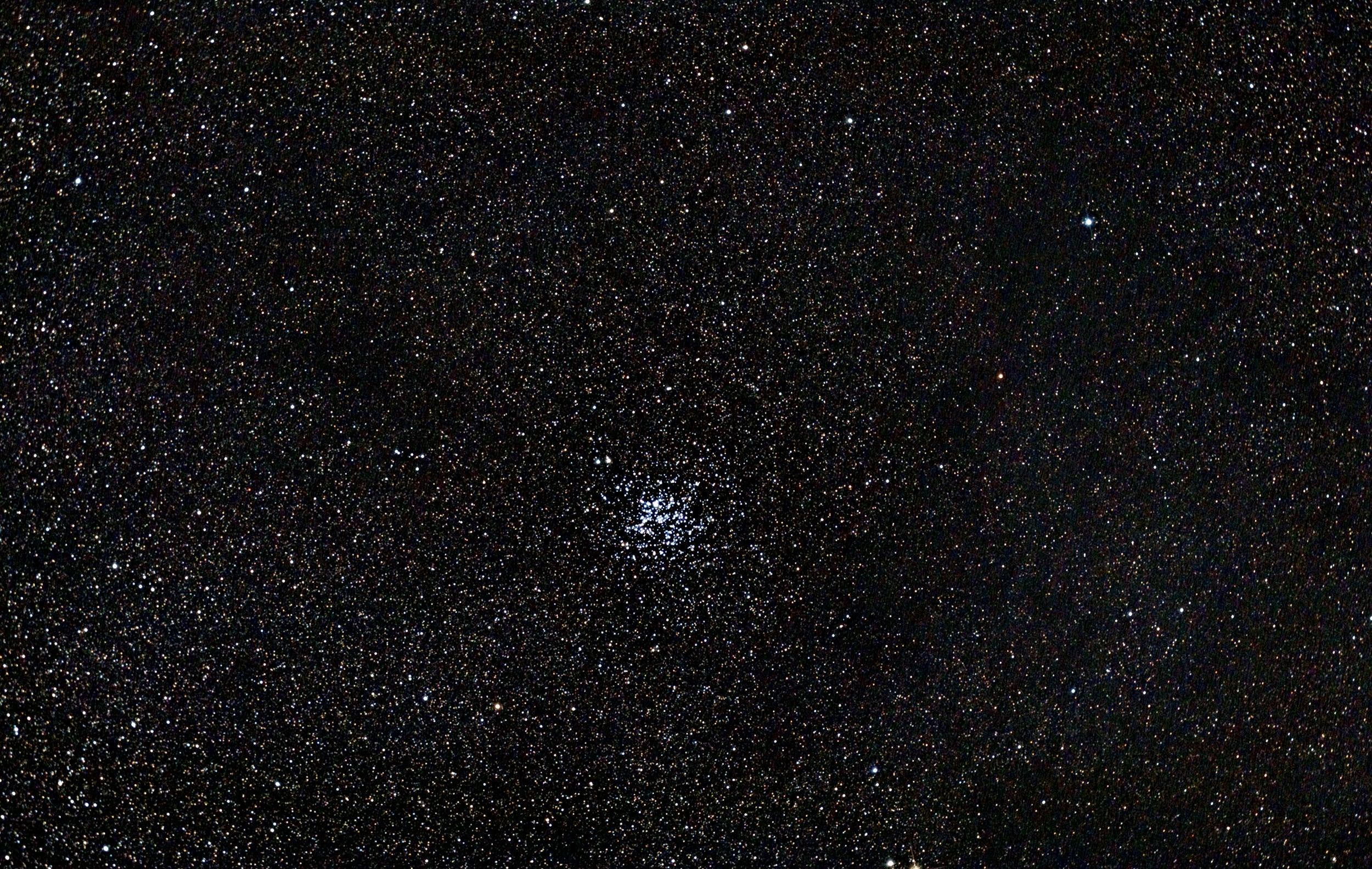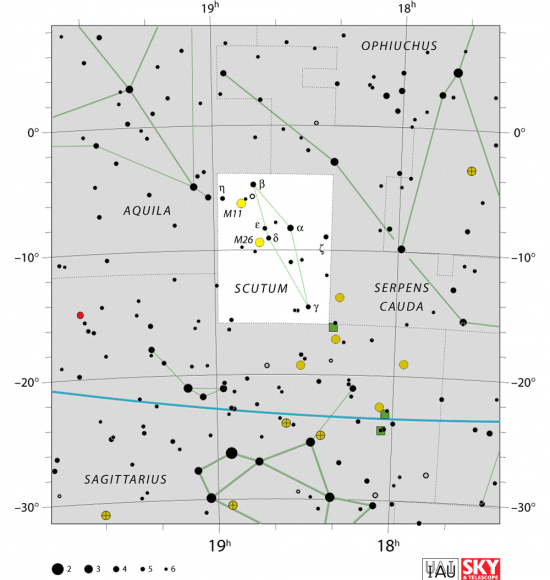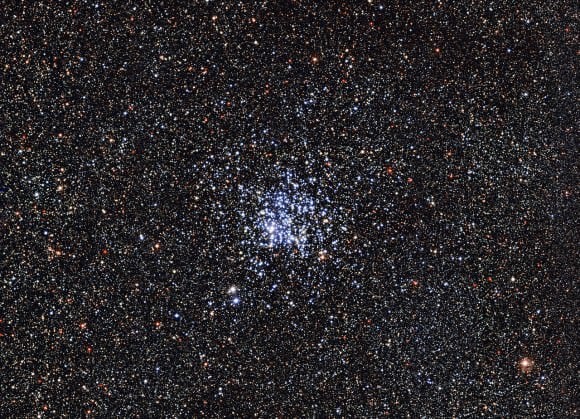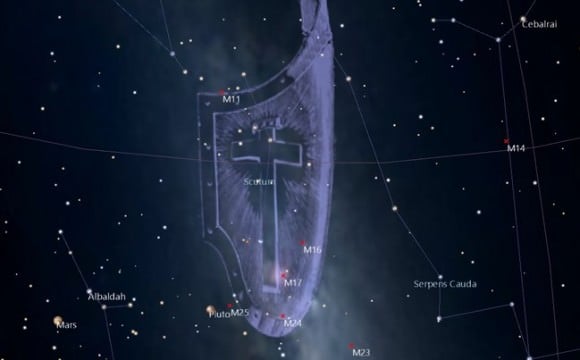Welcome back to another edition of Messier Monday! Today, we continue in our tribute to Tammy Plotner with a look at the M11 Wild Duck Cluster!
In the 18th century, French astronomer Charles Messier noted the presence of several "nebulous objects" in the night sky while searching for comets. Hoping to ensure that other astronomers did not make the same mistake, he began compiling a list of 1oo of them. This list came to be known as the
Messier Catalog
, and would have far-reaching consequences.
One of these objects is M11, otherwise known as The Wild Duck Cluster, an open cluster located in the constellation Scutum, near the northern edge of a rich Milky Way star cloud (the Scutum Cloud). This open star cluster is one of the richest and most compact of all those known, composed of a few thousand hot, young stars that are only a few million years old.
Description:
At around 220 million years old, Messier 11 is one of the richest and most compact of the known open clusters, containing about 2900 stars. Its brightest and hottest main sequence stars are of spectral type B8 and it also contains many yellow and red giant stars. Speeding away from us at 22 kilometers per second, a total of 82 variable stars have so far been discovered amidst its vast population.
Many pulsating stars and eclipsing binaries in the region of M11 are probable members of the cluster as well. M11 has also been studied for its metallicity content, because metallicity estimates will be useful in planning future extrasolar planet transit searches, since planets may form more readily in metal-rich environments.
[caption id="attachment_128341" align="aligncenter" width="550"]
The Scutum Constellation. Credit: IAU/Sky&Telescope magazine
[/caption]
As J.L. Marshall, an astronomer from the University of Ohio, described the cluster in the 2005 study "
Survey for Transiting Extrasolar Planets in Stellar Systems. II. Spectrophotometry and Metallicities of Open Clusters
":
By studying the integrated light and photometric colors, scientists have been able to determine that Messier 11 is relatively old. According the the research of R. Sagar and H. C. Bhatt: "This could be due to the fact that the number of evolved massive red stars in the cluster is low. Such things can be observed if star formation in the cluster was not coeval and more massive stars were formed towards the end in the central region."
[caption id="attachment_128342" align="aligncenter" width="580"]
Messier 11, imaged using the Wide Field Imager on the MPG/ESO 2.2-metre telescope at ESO's La Silla Observatory in Chile. Credit: ESO
[/caption]
But why is studying what we see so close to home important? According to S. Lata, it is because:
History of Observation:
M11 was first discovered German astronomer Gottfried Kirch of the Berlin observatory in 1681 and it is historically believed to have been first resolved into stars by William Derham about 1733. However, it became famous when Charles Messier included it in his catalog on May 30, 1764. As he recorded in his notes at the time
:
[caption id="attachment_128345" align="aligncenter" width="580"]
The Scutum Constellation ("The Shield" in Latin). Credit: appfeds.com
[/caption]
Historically speaking, that's not a bad description. But as with many Messier Objects, the credit for the most apt and detailed description again goes to Admiral Smyth:
So where do the "wild ducks" come into play? It seems no one is too sure of who first began calling this open star cluster by this name. But it is the general consensus that the name arose as a result of the object resembling the V-shape of a flight of ducks, when viewed through a small telescope.
Locating Messier 11:
The Wild Duck Cluster is one of the easier objects to find in the night sy. Although M11 is in the constellation of Scutum, use Aquila as your guide. Its distinctive "T" shape shows in even relatively light polluted areas! Beginning with Altair (Alpha Scu), count four stars down the back towards the south. At the end of this chain, you will see two stars close together. Starhop almost this same distance west and you'll find Messier 11 with ease!
Using binoculars, it will show as a distinctive diamond-shaped compression of starfield and will begin some resolution. In the finderscope it will appear as a small hazy patch. Even in a small telescope it will resolve into a glorious open cluster and will show hundreds of stars to larger aperture.
And here are the quick facts on M11, for your convenience:
- Object Name
-
Messier 11
- Alternative Designations
-
M11, NGC 6705, "Wild Duck" Cluster
- Object Type
-
Open Star Cluster
- Constellation
-
Scutum
- Right Ascension
-
18 : 51.1 (h:m)
- Declination
-
-06 : 16 (deg:m)
- Distance
-
6.0 (kly)
- Visual Brightness
-
6.3 (mag)
- Apparent Dimension
-
14.0 (arc min)
Good luck with your "duck hunting"! Just remember, the only thing you need to be armed with here is a pair of binoculars or a telescope.
We have written many interesting articles about Messier Objects here at Universe Today. Here's Tammy Plotner's
Introduction to the Messier Objects
, ,
M1 – The Crab Nebula
,
M8 – The Lagoon Nebula
, and David Dickison's articles on the
2013
and
2014
Messier Marathons.
Be to sure to check out our complete
Messier Catalog
. And for more information, check out the
SEDS Messier Database
.
 Universe Today
Universe Today



